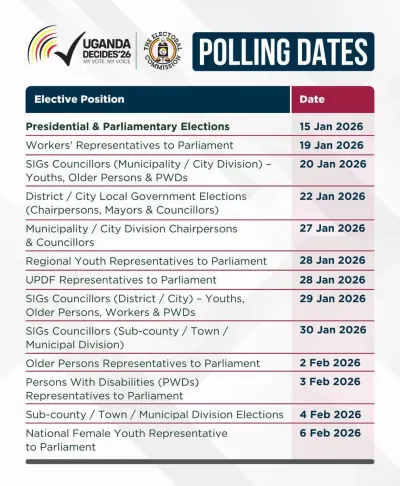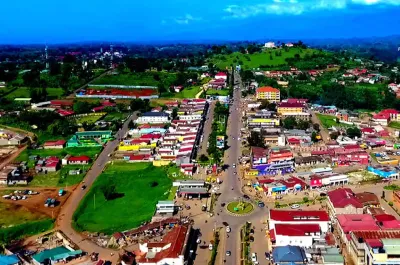
No amount of repetition of what has failed before will enable us get different results out of the agricultural sector!
The campaigns for 2016 general elections are underway. All political parties are animatedly arranging to pick the candidates that will represent them in the polls. The police are also busy stocking anti-riot gear in anticipation of what often happens during elections in Africa — violence.
The voters are equally excited in anticipation of what elections in Africa, or at least in Uganda, prescription come with — free logistical items and cash. Some have already abandoned their gardens or kiosks to accompany their favourite politicians as they campaign to become the flag-bearers of their parties.
In the meantime, the shilling continues to depreciate on the account of the changing market expectations caused by the rising political temperature, among other factors. The prevailing exchange rate, in the range of UGX 3,350 per U.S. dollar, is itself being supported by Bank of Uganda’s intervention (by selling dollars). Had the BOU not intervened last week, the exchange rate would perhaps already be above UGX 4,000 per dollar!
I have written before, in these very pages, that the shilling will not recover until we proactively attend to the basic fundamentals that determine the value of a country’s currency (productivity, export capacity, import surveillance, management of market expectations etc).
I have seen many people writing about the shilling crisis. Most of those I read concentrated on analyzing the generics and textbook stuff as solutions to our problem. Mr. President, let me give you some specific solutions anchored on the on-the-ground realities.
Exporting vegetables!
First, the figures; we need some facts to guide us as we choose the tools to fix this sick economy. We produce about USD 26 billion (UGX 75 trillion) worth of output each year (the so-called GDP). Of this, only about 25% (USD 6.5 billion) is from agriculture, yet the sector employs 76% of Ugandans, of whom 63% are youth.
Secondly, of the USD 6.5 billion of agricultural GDP, we export only USD 2 billion. The rest is food that we eat locally. Uganda’s total exports are worth USD 5.2 billion, meaning that agriculture contributes about 40% of these export receipts.
Recent studies found that Uganda’s revealed comparative advantage (measured by the relative weight of a percentage of total export of a commodity in a nation over the percentage of world export in that commodity) is vegetables. In simple plain English, we can compete favourably in selling edible grass (nakati, ddoodo, bbugga etc).
To export these vegetables, it takes 28 days, 7 documents, and USD 2,800 (or UGX 9.2 million) per container. And in the last five years, the agricultural sector has been growing at an annual average rate of 1.2%.
Productivity in the sector is very low. For example, Uganda’s historically major export crop is coffee. However, Ugandans use nearly 6 acres of land to produce a single tonne of coffee. Other producers of coffee, such as Brazil and Vietnam, on average harvest a tonne every 2 acres.
Turn vision into action
The low productivity problem is compounded by high post-harvest losses. On average Ugandan farmers lose nearly half of their harvest, and our research recently established that these losses increase with time. For example, our research and that of World Food Programme (WFP) found that although farmers lose only 21% of their maize in the first 30 days after harvest, the losses increase to 60% after 90 days.
Ours is a very ridiculous reality; we do not produce enough, but even much of the little we harvest is lost to poor post-harvest handling. These are some of the realities that we need to keep on our finger tips as we cry about the deteriorating value of the shilling.
These statistics point to one fact; for Uganda to turn around her economy, we must focus on the sector that employs majority of our people, the sector whose potential is massive but in need of a simple jumpstart, the sector where resources needed to improve its performance are naturally available. That sector is agriculture.
Mr. President, true we have heard you and also read your government’s policy documents saying how agriculture is a priority sector. We have seen your four-acre model that you intend to use in the forthcoming campaigns to mobilize Ugandans to increase agricultural production and productivity.
We have also read the National Development Plan (NDP II) that you launched on June 11th this year and seen statements in it emphasising your government’s commitment toward agriculture in the next five years. What we haven’t seen are the actual actions needed to turn around the sector. We need to move from vision and plans to action.
We should immediately do the following to turn around agriculture, increase its productivity, exports, food, jobs, and save the shilling and the entire economy.
Disband MAAIF
Disband the current Ministry of Agriculture, Animal Industry and Fisheries (MAAIF) and create a less bureaucratic and focused entity. You may call it the National Agricultural Authority, led by an Executive Director under a small Board of Directors.
Define for the authority measurable targets that should include: (1) setting up seed multiplication centres in each region of Uganda with capacity to supply high yielding varieties (HYV) to all farmers in the region in the next 2 years; (2) constructing community-based storage, drying, cold chains, and silo storage facilities at municipality level in the next 2 years; (3) setting up of value addition centres (agro-processing centres) in the radius of 70kms across the country in the next 2 years; (4) developing functional value chains for each key agricultural product in the next 3 years.
Other targets may include; (5) establish an integrated marketing network for agricultural products that is devoid of too many middlemen. As a starting point, develop farmers’ markets in the radius of 50kms. Also secure at least five bilateral and regional trade agreements in the next 2 years; (6) Reactivate farmer cooperatives in each region of Uganda.
The new authority must also be tasked to set up an agricultural college affiliated to Makerere University College of Agricultural and Environmental Sciences (CAES) specifically to train an army of young, committed, and well remunerated agricultural extension workers, post-harvest handlers, millers and agro-processors, and agricultural marketers.
To ensure that the efforts of the authority are not undermined by inefficiencies in others departments of government, the various agencies and departments of government that have a link with agriculture must become stakeholders in the new authority.
Where’s private sector?
For the purpose of providing agricultural research and development (R&D) support to the authority, the National Agricultural Research Organisation (NARO), National Animal Genetic Resources Centre and Database (NAGRC & DB), and National Agricultural Advisory Services (NAADs) should be co-opted.
For industry and infrastructure support, the Uganda Industrial Research Institute (UIRI), Rural Electrification Agency (REA), Uganda National Roads Authority (UNRA), National Information Technology Authority (NITA), and National Water and Sewerage Corporation (NWSC) should also be drafted in.
For the purpose of providing financing support to the authority, Bank of Uganda, Uganda Development Bank, Microfinance Support Centre, and Local Government Finance Commission need not be left out.
To provide marketing and promotional support to the new authority, the Export Promotions Board, Uganda Coffee Development Authority, Cotton Development Organisation, Dairy Development Authority, and Vegetable Oil Development Program need be drafted in as well.
Agriculture in Uganda will not grow without attracting serious private investors. Thus the new authority will need investment support from the Uganda Investment Authority (UIA), Uganda National Bureau of Standards (UNBS), Uganda Licensing Board (ULB), and Uganda Land Commission (ULC) to attend to the various challenges that are currently impeding investment in the sector.
Radical actions needed
Talking about private investment reminds me of our private sector organisations. What role do organisations such as the Uganda Manufacturers Association (UMA), the Uganda National Chamber of Commerce and Industry (UNCCI), Private Sector Foundation Uganda, and Kampala City Traders Association (KACITA) play in the development of the agricultural sector? These are the umbrella organisations for the wealthiest Ugandans. Why have we failed to mobilize them to invest in this lucrative sector? What incentive should government use to attract them into the agricultural sector? The new authority will be able to answer these questions.
Mr. President, to develop the agricultural sector and include the masses in the market economy to produce for export, we need to start doing everything differently. No amount of repetition of what has failed before will enable us get different results. We need to do what we did when everyone thought nothing could be done to turn around Kampala. Jennifer Musisi is at the brink of achieving what most people thought was an impossible job — making Kampala look like city again.
Agriculture too can work. It simply needs a Musisi to turn it around — a well remunerated person to close the ear of ‘impossibility’ and do simple, practical but radical things to get the people of Uganda back to their gardens, add value to their produce, export and earn the dollar for this naturally well endowed but dying country.















Ramathan Ggoobi
Ramathan Ggoobi is Policy Analyst, and Researcher. He lecturers economics at Makerere University Business School (MUBS) and has co-authored several studies on Uganda's economy. For the past ten years, he has published a weekly column 'Are You Listening Mr. President' in The Sunrise Newspaper, Uganda's Leading Weekly
Leave a Comment
Your email address will not be published.